Acupuncture & TCM Articles
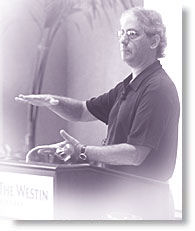
Articles by Jake Paul Fratkin, OMD, LAc
Jake Fratkin, OMD, LAc, has been in the practice of Oriental medicine since 1978. Following undergraduate and graduate training at the University of Wisconsin in Chinese language and philosophy and pre-medicine, he pursued a seven-year apprenticeship in Japanese and Korean style acupuncture with Dr. Ineon Moon and a two-year apprenticeship in Chinese herbal medicine with Drs. Zhengan Guo and Pak-Leung Lau in Chicago. He also spent a year in Beijing hospitals interning in advanced herbal medicine, specializing in gastrointestinal and respiratory disorders, and pediatrics. 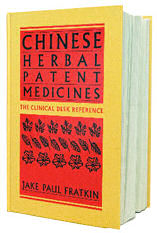 Dr. Fratkin is the author of several books, including Chinese Herbal Patent Medicines: The Clinical Desk Reference, and is the editor-organizer of Wu and Fischer's Practical Therapeutics of Traditional Chinese Medicine. In 1999, he was named the "Acupuncturist of the Year" by the American Association of Oriental Medicine.
Dr. Fratkin is the author of several books, including Chinese Herbal Patent Medicines: The Clinical Desk Reference, and is the editor-organizer of Wu and Fischer's Practical Therapeutics of Traditional Chinese Medicine. In 1999, he was named the "Acupuncturist of the Year" by the American Association of Oriental Medicine.
Chinese Herbal Patent Medicines: The Clinical Desk Reference
Hardback book, 1198 pages. This volume covers 1360 products, including 550 GMP level products and all of California FDB analysis on 505 products. Includes information on endagered animals, heavy metals, and pharmaceuticals. The text is organized into 12 groups, with a total of 109 chapters and includes material by Andrew Ellis, Subhuti Dharmananda, and Richard Ko. Over 80 pages of full-color photos (with English and Chinese cross-reference). Fully indexed.
New Chinese Herbal Formulas for Treating Depression
It's becoming more common to encounter patients who are on a mood-stabilizing drug for depression or anxiety. Most of these are SSRIs (selective serotonin re-uptake inhibiters) given for depression and include Prozac, Zoloft, Paxil, Celexa and Lexapro.
Serotonin is a neuro-transmitter that allows communication between central nervous system neurons and, if deficient, can lead to depression. Western medicines hope to keep existing serotonin in circulation without being reabsorbed. Other pharmaceutical strategies include tricyclic antidepressants, which inhibit the re-uptake of serotonin and norepinephrine, and include Adapin, Elavil, Norpramin and Pamelor; MAO antidepressants, which inhibit monamine oxidase and thus degrade neurotransmitters, and include Marplan, Nardil and Parnate; and finally, "second generation" medicines, each working with unique mechanisms, including Desyrel, Effexor, Remeron, Serzone, Cymbalta and Wellbutrin.
Success rates for the treatment of depression by all types of Western medicine are controversial. One study claims a success rate as high as 70 percent, while another claims it is as low as 18 percent. Also, many of the neurotransmitter medicines have side effects (e.g., nausea, insomnia, headache), and the MAO antidepressants, in particular, are responsible for the highest iatrogenic death rate of any class of pharmaceutical medicines.
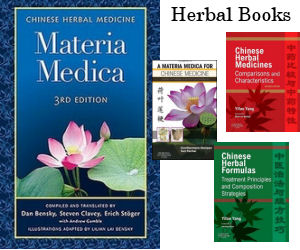
These medicines do not build or create neurotransmitters, but try to keep existing neurotransmitters in circulation longer. Often, the clinical effectiveness of a single medicine plateaus - it works for a while, but then seems to stop working. Medical doctors will then rotate or substitute with another medicine, with the patient as a guinea pig.
The research done on neurotransmitter involvement is relatively new, but opens an exciting field of therapy for mood disorders. Neurotransmitters were not even defined until 1961, and since then, 183 chemicals have been identified. What is known in depression is that the neurotransmitters serotonin and norepinephrine become depleted. The Western approach is to keep more serotonin and norepinephrine in circulation. This actually is self-limiting, because the use of the uptake inhibiters actually will reduce overall supplies of serotonin and norepinephrine over time. A more effective approach is that of functional medicine, which offers nutritional therapy to try to build serotonin with tryptophan (5-HTP) and norepinephrine with the amino acid tyrosine, plus cofactors. This approach offers an effective alternative to Western prescription drugs, although it is expected for the patient to stay on this therapy indefinitely.
Can Chinese medicine offer a suitable alternative? By suitable, I mean effective. Clinical depression can be mild and episodic or it can be debilitating, with a patient confined to a bed or couch for months at a time. The advantage of Western medicine is the chance for immediate relief. In the case of depression, especially in a teenager, this can be the difference between life and death, if one looks at the statistical risk of suicide. However, long-term use of pharmaceutical interventions can significantly disrupt normal neurotransmitter activity. For a long-term, safer treatment, Chinese medicine - both herbs and acupuncture - can offer significant help.
The classical approach is to treat the presentation of depression according to zang-fu organization; in recent times, several unique formulas have emerged that directly address depression according to zang-fu. Another approach is to try to raise serotonin and norepinephrine levels directly with Chinese herbs. This is experimental, from a clinical standpoint. Scientific validation is difficult because it is hard to measure the amounts of neurotransmitters that are in the central nervous system directly. It cannot be done by blood or urine, so one must look at clinical improvement alone. As to individual herbs that raise neurotransmitter levels, research is being conducted on a number of tonic herbs, including dong chong xia cao (Pulvis cordyceps), wu jia shen (Radix eleutherococcus), huang qi (Radix astragalus) and hong jing tian (Radix rhodiola).
From the zang-fu perspective, based on teaching material from the Shanghai and Beijing Colleges of TCM, four differentiations are seen, using the following herbal prescriptions:
1) Stagnation of Liver Qi - use chai hu shu gan san.
2) Transformation of Stagnant Qi Into Fire - use jia wei xiao yao san or long dan xie gan tang.
3) Obstruction by Stagnant Qi and Phlegm - use ban xia hou po tang or bao he wan.
4) Deficiency of Yin and Blood - use gan mai da zao tang or gui pi tang.
These differentiations and form-ulas should be known to practicing herbalists, and adjustments and modifications can be found in source texts. Most practitioners see liver qi stagnation as the main cause of depression. This becomes obvious when treating depression found during premenstrual syndrome or menopause; a formula such as chai hu shu gan tang is quite effective. In depressive-anxiety disorders, marked by depression and sadness coexisting with anxiety and insomnia, the formulas jia wei xiao yao san or long dan xie gan tang are used. Stagnant qi and phlegm disorders are seen in more chronic depressive episodes. Here, a thick tongue coat confirms the stagnation. Deficiency of yin and blood is seen in postpartum depression or in deficiency cases, including aging.
Besides these classical formulas, I have been looking at prescriptions created by modern master herbalists that I would like to discuss:
1. HerbChina2000.com, an interesting Web site from China, offers a formula called Depression. This formula addresses depression primarily as disturbance to heart shen, with herbs such as yuan zhi, shi chang pu, suan zao ren and bai zi ren. The inclusion of these herbs assumes some anxiety and sleep issues as part of the pattern. Otherwise, it includes herbs to dredge the liver so as to relieve stagnation, including chai hu, zhi ke and yu jin. The complete formula is:
- yuan zhi (Radix polygala);
- dang shen (Radix codonopsis pilosula);
- shi chang pu (Rhizome acorus gramina);
- chai hu (Radix bupleurum);
- suan zao ren (semen zizyphus spinosa);
- zhi ke (Fructus citrus aurantium);
- bai zi ren (Semen biota orientalis);
- dan zhu ye (Folium lophatherum); and
- yu jin (Rhizome curcuma).
2. Albizzia 9, offered by Seven Forests, is a formula of the master American herbalist Subhuti Dharmananda. Its lead herb is he huan pi, which is used for depression due to liver stagnation. He supports this with other herbs to relieve liver stagnation, including yu jin and bao shao.
Like the formula above, herbs to calm and nourish shen are included, such as yuan zhi, ye jiao teng and bai zi ren. The formula also employs herbs to settle rising liver yang, a consequence of liver stagnation, such as bai ji li and gou teng. It also would be applied to a case of depression with concurrent anxiety. The complete formula is:
- he huan pi (Cortex albizzia);
- yuan zhi (Radix polygala);
- gou teng (Ramulus uncaria);
- yu jin (Rhizome curcuma);
- dan shen (Radix Salvia miltiorrhiza);
- bai shao (Radix Paeonia lactiflora);
- ye jiao teng (Caulis polygonum multiflorum);
- bai ji li (Fructus tribulus); and
- bai zi ren (Semen biota orientalis).
3. Aspiration, offered by Andrew Gaeddert of Health Concerns, uses herbs to address stagnation and disturbance of shen, including yuan zhi, bai shao, chen xiang and he huan hua. The lead herb, however, is zhi zi, implying the presence of liver heat, which is seen as contributing to irritability. Liver heat also can lead to accumulation of phlegm in the middle jiao, and is addressed with ban xia and fu ling. The complete formula is:
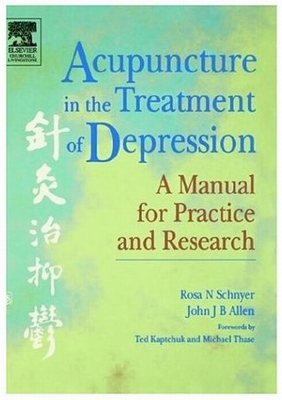 
- yuan zhi (Radix polygala);
- zhi zi (Fructus gardenia jasminoides);
- bai shao (Radix paeonia lactiflora);
- chen xiang (Lignum aquilaria);
- ma bian cao (Herba verbena);
- he huan hua (Flos albizzia);
- dang gui (Radix Angelica sinensis);
- gou teng (Ramulus uncaria);
- damina leaf;
- ban xia (Rhizome pinellia); and
- fu ling (Sclerotium poria cocos).
4. Anti-Dep is a formula from Dr. Kang Pingqi (Dr. Kang Formulas). His approach for depression prioritizes dredging the liver with chai hu, yu jin, zhi ke, dan shen and bai shao. His second strategy is to aggressively settle liver yang and heart shen with long gu, mu li and shi chang pu. Like the previous formulas, he sees disturbed shen as an active component in depression, but this formula, I think, also addresses symptoms of obsessive thinking. The complete formula is:
- chai hu (Radix bupleurum);
- yu jin (Rhizome curcuma);
- hui xiao mai (Semen triticum);
- hong zao (Fructus zizyphus jujube);
- gan cao (Radix glycyrrhiza);
- zhi ke (Fructus citrus aurantium);
- dan shen (Radix salvia miltiorrhiza);
- long gu (Os draconis);
- mu li (Concha ostrea);
- shi chang pu (Rhizome acorus gramina); and
- bai shao (Radix paeonia lactiflora).
5. Dr. Lihua Zhang, who formulates for Herbalmax Formulas, offers a simple prescription called Mood and Fatigue Formula. It addressed depression due to fatigue and exhaustion, and would be appropriate for depression in postpartum, menopause and the elderly. She moves qi with chen pi, moves liver blood with bai shao and yu jin, and then tonifies qi, blood and yin with ren shen, dang gui and mai men dong. The complete formula is:
- chen pi (Pericarpium citrus reticulata);
- dang gui (Radix angelica sinensis);
- bai shao (Radix paeonia lactiflora);
- yu jin (Rhizome curcuma);
- ren shen (Panax ginseng); and
- mai men dong (Tuber ophiopogon).
What strikes me about these form-ulas is that they all try to address liver stagnation and disturbed shen simultaneously, bringing into the picture degrees of irritability, poor sleep and anxiety. Although I am not aware of clinical studies on the success of this approach, I do know that in clinical practice, they offer significant relief and stand as a nontoxic approach to depression.
Dr. Shudo Denmai, the Japanese acupuncturist, remarked that a sign of mental illness is the degree to which the patient can think only of themselves and of their problems. As you treat this patient and as they get better, they start to think beyond their own problems and start addressing events and the world outside themselves. In treating depression and other anxiety disorders, I look for this change of attitude as a sign that the therapy is having a positive effect.
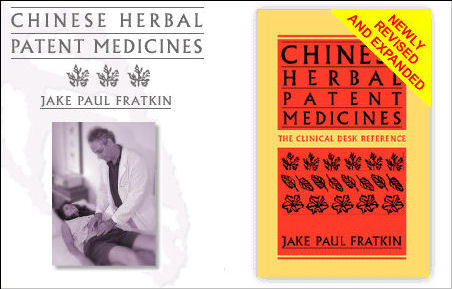 
|
